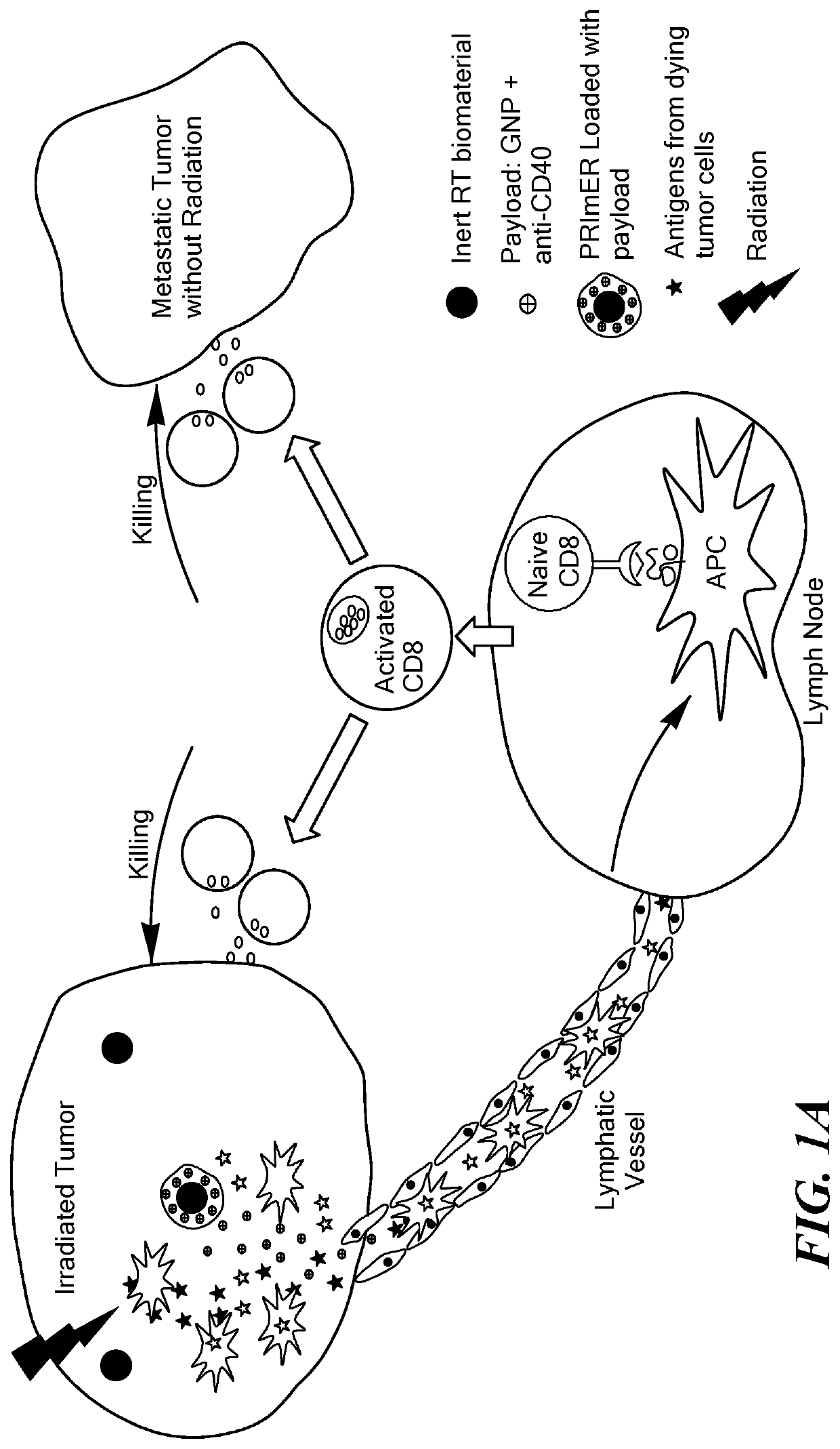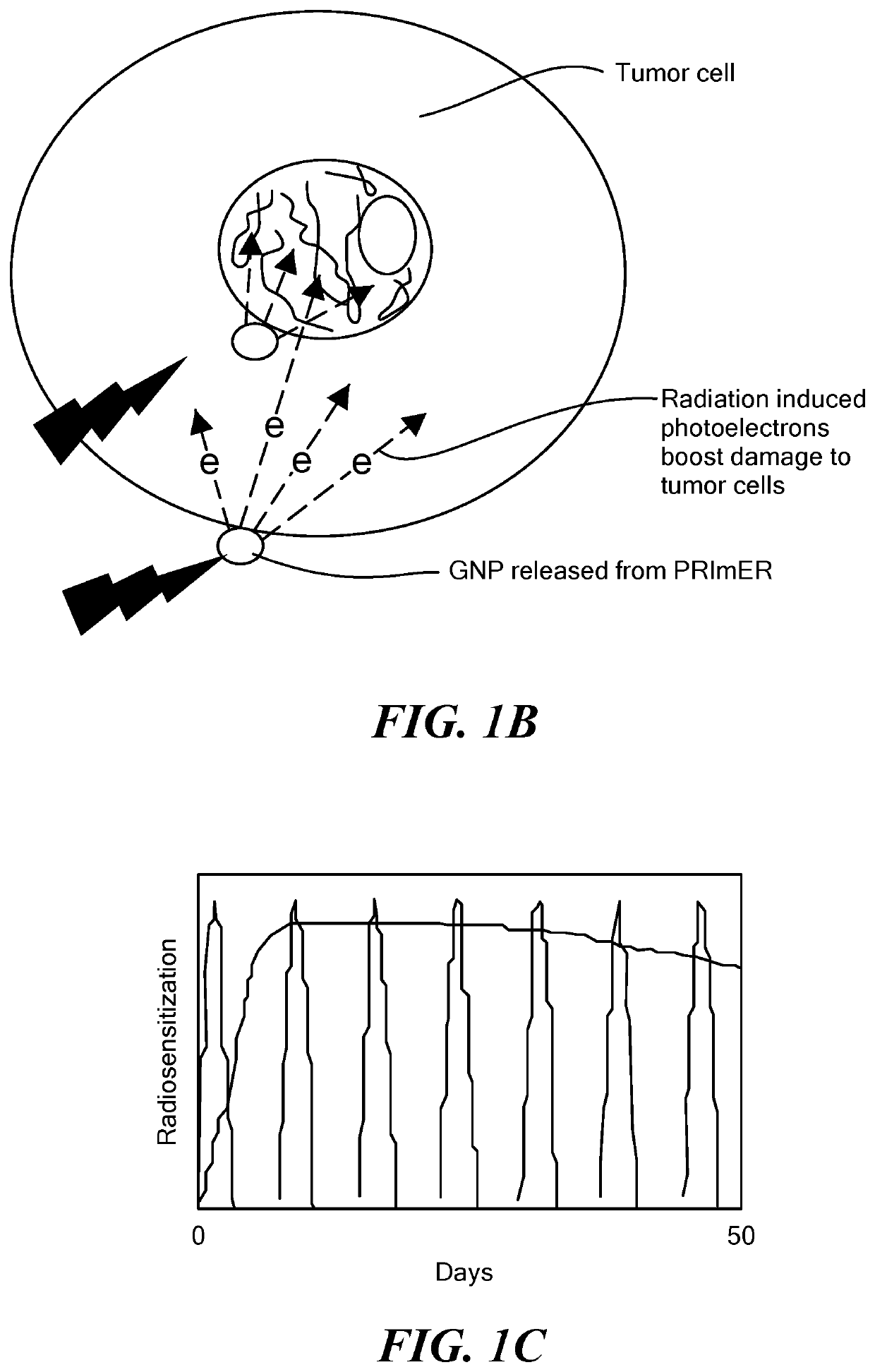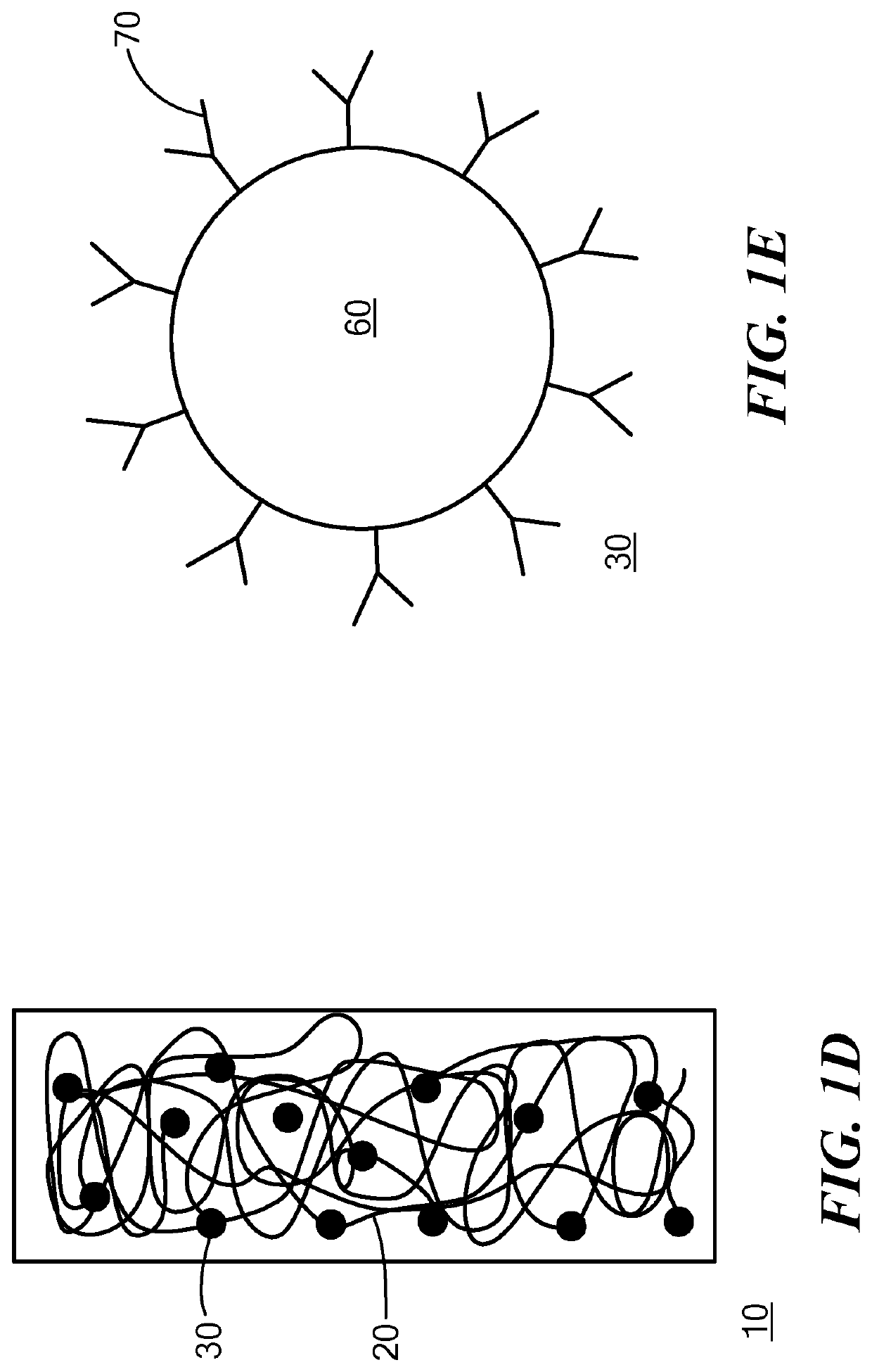Biomaterials for combined radiotherapy and immunotherapy of cancer
a cancer and immunotherapy technology, applied in immunological disorders, antibody medical ingredients, therapy, etc., can solve the problems of cancer being a leading cause of death worldwide, difficult to achieve effective treatment, and unable to save healthy tissues and organs from radiation
- Summary
- Abstract
- Description
- Claims
- Application Information
AI Technical Summary
Benefits of technology
Problems solved by technology
Method used
Image
Examples
example 1
ion and Release of Nanoparticle Composition
[0039]Pancreatic tumors were grown subcutaneously on the left and right flanks of C57BL / 6 mice. The mice were randomized into four groups: a control group that received no treatment; a group that received radiotherapy only; a group that received immunotherapy (anti-CD40) only; and a group that received both radiotherapy and an implant containing anti-CD40 and metallic nanoparticles. FIGS. 2A-D show a tumor in a mouse containing an implant including the composition of the instant invention (gold nanoparticles conjugated to anti-CD40). The implant was radiopaque and could be clearly seen on day 1 post implantation (FIG. 1A). The implant gradually released its contents, including the gold nanoparticles, and it's size and opacity decreased until at day 8 it could no longer be detected (FIG. 2D).
example 2
ic Effect of Radiation Therapy and Immunoadjuvant Therapy
[0040]Tumors were grown in mice as in Example 1, and the mice were treated at 19 days after tumor implantation; only the left flank tumors or the right flank tumors were treated on each mouse. Treatment involved either radiation therapy (RT) alone, anti-CD40-conjugated gold nanoparticles alone, or a combination of radiation therapy and anti-CD40-conjugated gold nanoparticles. The results are shown in FIG. 3. Relative to the controls, the largest tumor growth suppression was observed in mice treated with both radiotherapy and the anti-CD40 nanoparticle composition. An abscopal response was also observed: 18 days after treatment, the untreated right side tumors of mice treated with the composition of the instant invention showed 63% tumor growth suppression relative to controls (FIG. 3).
example 3
Effect on Non-Irradiated Tumors
[0041]Tumors were grown in mice as in Example 1, and the mice were treated at 11 days after tumor implantation; only the left flank tumors were treated. Treatment modalities were the same as in Example 2. Over 50% of mice with one tumor treated by both radiotherapy and the anti-CD40 nanoparticle composition showed an abscopal response, i.e., they showed complete tumor regression in the untreated right flank tumor (FIG. 4). Meanwhile, such regression was not observed for any mice in the control group or the groups treated with radiation therapy alone or immunotherapy alone. When combining radiation therapy with the anti-CD40 nanoparticle composition, an increase in CD8+ T cells also was observed in the untreated (right flank) tumors (FIG. 5). A decrease also was observed in most myeloid cell types, particularly neutrophils and myeoloid-derived suppressor cells (MDSCs), and no apparent phenotypic change was observed in dendritic cell populations either w...
PUM
| Property | Measurement | Unit |
|---|---|---|
| size | aaaaa | aaaaa |
| diameter | aaaaa | aaaaa |
| length | aaaaa | aaaaa |
Abstract
Description
Claims
Application Information
 Login to View More
Login to View More - R&D
- Intellectual Property
- Life Sciences
- Materials
- Tech Scout
- Unparalleled Data Quality
- Higher Quality Content
- 60% Fewer Hallucinations
Browse by: Latest US Patents, China's latest patents, Technical Efficacy Thesaurus, Application Domain, Technology Topic, Popular Technical Reports.
© 2025 PatSnap. All rights reserved.Legal|Privacy policy|Modern Slavery Act Transparency Statement|Sitemap|About US| Contact US: help@patsnap.com



